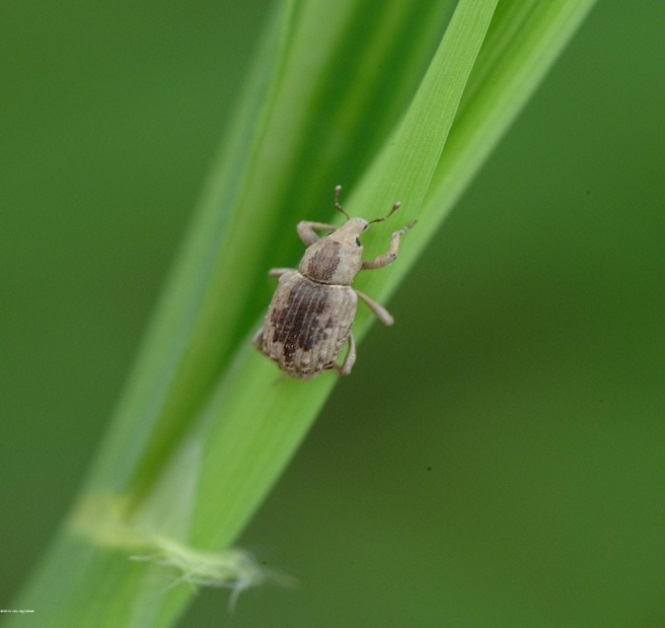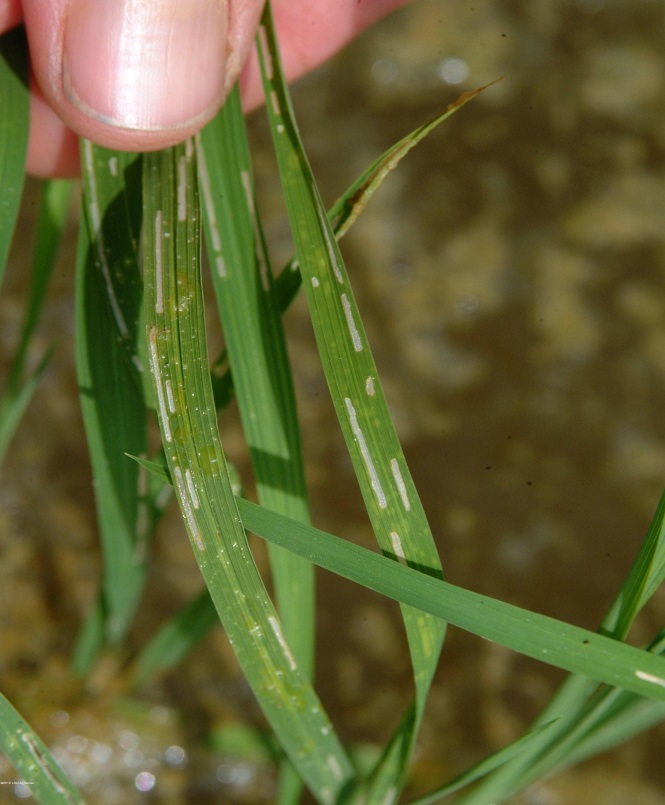
Rice water weevil
| Primefact number | Edition | Published | Author |
|---|---|---|---|
| 1213 | Second | Aug 2017 | Plant Biosecurity and Product Integrity |


Rice water weevil is a pest of rice crops.
Adult rice water weevils can be difficult to differentiate from native weevil species. Seek advice if you suspect that rice water weevil is present.
Rice water weevil (Lissorhoptrus oryzophilus) is an exotic plant pest not present in Australia. This pest is a serious threat to Australia’s rice industr.
Notifiable status
Rice water weevil (Lissorhoptrus oryzophilus) is a notifiable plant pest in NSW.
All notifiable plant pests and diseases must be reported within 1 working day. You can report notifiable plant pests and diseases by one of the following methods:
- Call the Exotic Plant Pest Hotline 1800 084 881
- Email biosecurity@dpi.nsw.gov.au with a clear photo and your contact details
- Complete an online form
A full list of notifiable plant pests and diseases can be found in Schedule 2 of the NSW Biosecurity Act 2015.
Description
Adult rice water weevils are 3-4 mm in length. They are greyish brown in colour with a dark marking along the back from the base of the head to the middle of the wing covers (Figure 1).
Damage
Adult rice water weevils overwinter in grasses and leaf litter. They emerge from overwintering in spring and invade rice fields to feed on the leaves of seedlings.
The adult rice water weevil feeds between the veins of rice leaves. The longitudinal feeding scars are white (Figure 2).
Economic damage is primarily caused by the rice water weevil larvae. Larvae feed below the soil on the roots of rice plants. Root damage leads to reduced nutrient uptake and plants turn yellow and may die prematurely.
Plants that survive do not reach normal height and produce less grain than unaffected plants. Maturity may be delayed and grain weights may also be reduced.
Lifecycle
Female rice water weevils deposit their eggs in a leaf sheath at or below the water line.
Eggs are white and cylindrical and less than 0.4 mm long.
First instar larvae are less than 1 mm long. Larvae initially feed in the leaf sheath before moving into the soil to feed on the roots. Final instar larvae grow to about 5 mm in size.
Larvae form cocoons attached to the roots and pupate. The pupal stage lasts for approximately 3 weeks at 22oC but will be shorter at higher temperatures.
Adults emerge and either fly to overwintering sites or invade other rice crops.
A complete lifecycle (egg to adult) takes around 11 weeks at 22oC.
Hosts
Cereals (Poaceae family) and rice (Oryza sativa) are the primary hosts of rice water weevil.
Distribution
Rice water weevil is native to North America. It is naturally distributed from Mexico to Canada and has spread to many countries in Central America. Rice water weevil has been introduced and become established in Japan, China, Italy and Korea.
In California there is a female only population of rice water weevil which is capable of producing viable eggs without male fertilisation (parthenogenetic). Rice water weevil populations in Japan and the Dominican Republic are also parthenogenetic and were probably derived from the Californian population.
Rice water weevil is not present in Australia.
Actions to minimise risks
Put in place biosecurity best practice actions to prevent entry, establishment and spread of pests and disease:
- practice “Come clean, Go clean”
- ensure all staff and visitors are instructed in and adhere to your business management hygiene requirements
- source propagation material of a known high health status from reputable suppliers
- keep records

